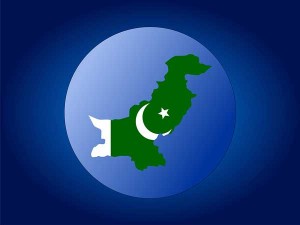
12/22/2011 – Following the November 26 incident, the Pakistani government convened an emergency session of the Defence Committee of the Cabinet (DCC), Pakistan’s highest forum for defense policy consultation and coordination. The DCC decided to retaliate for the attack by closing Pakistan’s two Afghan border crossings at Chaman and Torkham to NATO’s supply convoys.
Pakistan also gave U.S. personnel 15 days to vacate an air base in Baluchistan used to assist drone attacks against insurgents and terrorists in northwest Pakistan. The Pakistani authorities also suspended certain joint activities, withdrew Pakistani liaison officers from the border coordination centers and NATO headquarters in Kabul, boycotted the December 5 Bonn conference, reinforced their Afghan border defenses, and launched a comprehensive review of Pakistan’s security cooperation with NATO and the United States.
Despite pleas from Afghanistan and other foreign governments, Pakistan boycotted the December 5 Bonn conference that was convened to secure diplomatic and economic support for the Kabul government as NATO withdraws its troops from Afghanistan in coming years. More than 50 countries sent representatives to the meeting, designed to underscore the international commitment to Afghanistan’s security and to reassure potential foreign investors. But Pakistan’s absence deprived the conference of most of its impact.
As the DCC demanded, all U.S. personnel left Shamsi Air Base in western Pakistan by December 11. The expulsion from Shamsi was neither unexpected nor a major loss.

The CIA had earlier used its small airstrip in southwestern Pakistan extensively to launch drone attacks in northwest Pakistan, but the deteriorating relations between the United States and Pakistan led the United States to relocate its main drone bases to Afghanistan earlier this year. Pakistani officials had asked the United States to vacate the base on several previous occasions, but relented under pressure from Washington and the United Arab Emirates, which formally owns the base but has allowed the United States to use it.
For the past year, the United States has used the Shamsi base only as an emergency-landing zone for drone attacks cancelled due to weather, mechanical difficulties, or other problems.
The number of U.S. personnel based there had fallen to under a dozen by late November 2011. Gen. Martin E. Dempsey, the chairman of the Joint Chiefs of Staff, subsequently said that the United States has other options for “stationing aircraft and other resources around the region.” Asked about its impact, Dempsey explained that, “It’s a serious blow in the sense that the Pakistani government felt that they needed to deny us the use of a base that we’ve been using for many years” but he added that, “It’s not debilitating militarily.”
In fact, the drone strikes have been so successful in the past few years that most of the key al-Qaeda leadership targets in northwest Pakistan has been eliminated. Al-Qaeda leaders Ayman al-Zawahiri and his second in command, Abu Yahya al-Libi, are the last remaining high-value targets in the region.
Most importantly, there is no evidence that the Pakistani authorities have banned the use of the Predator surveillance and strike operations over their territory or stopped providing targeting data and other counterterrorist intelligence to the United States. The government has never ordered the Pakistani Air Force to shoot down the drones, which it could easily do.
Pakistan has benefited from the strikes against the militants because some of them wage terrorism against the Islamabad government. The Pakistani army claims it lacks the capacity to occupy and fight the insurgents and terrorists in some of the more remote tribal regions such as South Waziristan.
More worrisome is the fact that the Pakistani military has adopted less restrained rules of engagement in the Afghan-Pakistan border region.
In a command communiqué issued on December 2, Pakistani Army Chief Gen. Ashfaq Parvez Kayani authorized Pakistani forces to return fire in self-defense against any future acts of NATO “aggression” without requiring their superior’s approval. “I do not want there to be any doubt in the minds of any commander at any level about the rules of engagement,” Kayani said in the communique. “In case of any attack, you have complete liberty to respond forcefully using all available resources.”
The recent order is but the latest of several that have relaxed the rules of engagement in the border area.
After the earlier September 3, 2008 cross-border incident, the Pakistani army announced it would shoot any U.S. forces attempting to cross the Afghan-Pakistan frontier. On several occasions since then, Pakistani troops and militia have fired at what they believed to be U.S. helicopters flying from Afghanistan to deploy Special Forces on their territory, though there is no conclusive evidence that the United States have ever attempted another raid after the September 3 incident.
These Pakistani response measures may aim to strengthen the troops’ morale and reduce discontent with Kayani’s leadership, but they could lead to reciprocal escalation between NATO and Pakistani forces that stumble into an accidental firefight. In a concurrent move, the Pakistani military announced that it was strengthening its air defenses along the Afghan border. Capt. John Kirby, a Pentagon spokesman, acknowledged Kayani’s authority to reaffirm Pakistanis “right of self-defense,” Kirby added that, “We certainly respect that right of his. We have it as well.”
In addition to the risk of reciprocal escalation, another problem with Pakistan’s deploying more air defenses in border areas is that the weapons could fall into the hands of insurgents and terrorists there. They could then use these arms, or transfer them to terrorists who would use them, to shoot down civilian airliners as well as Western military aircraft.
For now, the Pakistani government has chosen not to terminate NATO’s use of Pakistani territory to send food, fuel, and equipment by ground transport to their ISAF contingents in Afghanistan. They have also refrained from closing the Pentagon’s use of a Pakistani airspace to convey some critical combat supplies, including ammunition, directly to air bases in Afghanistan. Shortages in transport planes and the high expense of air shipments preclude a major expansion of this airlift, but it is the main mechanism for delivering weapons and ammunition to the NATO forces in Afghanistan. U.S. Navy carrier aircraft also routinely fly over Pakistani airspace, through designated corridors, to strike targets in Afghanistan.
Instead of curtailing these essential logistical activities, Pakistani authorities have suspended the shipment of NATO supplies by ground transport to Afghanistan. On past occasions, the Pakistani authorities have temporarily closed only one of the two major crossing points into Afghanistan to NATO supplies. These earlier stoppages have lasted at most ten days and did not appreciably affect coalition operations. Last year, the Pakistani authorities closed only the Torkham crossing in the northwest Khyber tribal area. This time, they have closed both crossings, including the one at Chaman in southwestern Baluchistan province. Pakistan officials are also considering revising the terms of their transit trade agreement with Afghanistan, claiming that Afghan contractors were exploiting the agreement to move NATO supplies through Pakistani territory.
The present closure may also be designed to prevent the looting and burning of the trucks carrying NATO supplies that happened during the last blockade. Some of the arson was due to insurance fraud, but other burnings, which injured Pakistani drivers and security forces, were committed by extremists seeking to punish NATO. On this occasion, many trucks have prudently relocated to more secure areas.
Even so, hundreds of truck drivers are waiting at the port of Karachi and the Chaman terminal to deliver their goods to Afghanistan. They and other Pakistanis involved in the ground transport effort are suffering financial hardship since NATO only pays for supplies after the contractors have delivered them to their destinations in Afghanistan.
During the last few years, the ISAF coalition has developed additional supply routes through the countries north of Afghanistan. This Northern Distribution Network (NDN) has decreased the volume of food, fuel, and equipment shipped through Pakistan, but these northern routes cost more, are less efficient, and present their own problems.
Logistic bottlenecks prevent a rapid expansion of these alternative routes, especially during the harsh weather of the upcoming winter months. At present, many of the NDN transit countries exclude the transportation of weapons, ammunition, or other combat supplies through their territory.
As a result, almost half of the supplies to the 140,000 members of the ISAF still pass through Pakistan.
Each country is responsible for supplying its own forces in Afghanistan. The United States, which still has almost 100,000 soldiers in Afghanistan, ships more than 30 percent of its non-lethal supplies through Pakistan. Some other coalition members send a much higher percentage through that route.
The United States and other NATO countries cannot wait long for these supply lines to reopen. The U.S. Defense Department increased its stocks inside Afghanistan following the 2010 cross-border incident, but these stockpiles will be exhausted in a few months even if NATO forces slow the pace of their operations to conserve supplies.
Speculation is that the Pakistani government will permit these shipments to resume only after tempers have cooled and NATO agrees to some kind of concessions. It took apologies from U.S. and NATO leaders before the flows resumed after a less serious incident in 2010,when Pakistan closed one of its Afghan border crossings to NATO supplies for ten days after U.S. helicopters accidentally killed two Pakistani paramilitary soldiers.
Additional concessions will probably be required to overcome the current impasse given the higher number of Pakistani casualties and the other blows to the Pakistani-U.S. relationship in 2011.


